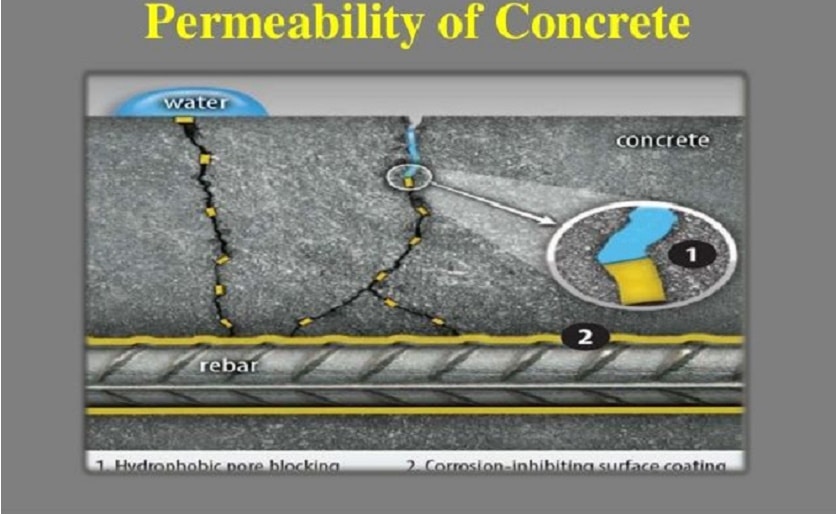🕑 Reading time: 1 minute
The permeability of concrete is a critical property that governs the rate at which fluids penetrate into a porous solid. It is primarily determined by the size and connectivity of pores within the concrete matrix, as well as the complexity of the pathways through which fluids travel.
Pores relevant to permeability typically possess a minimum diameter ranging from 120 to 160 nanometers and must be interconnected. Isolated pores, those filled with water, or those with narrow entrances are considered irrelevant to permeability.
Several factors significantly impact the durability and permeability of concrete. These factors, such as the water-to-cement ratio, concrete compaction, curing methods, and the age of the concrete, must be meticulously considered during the mix design and construction phases of concrete structures.
Factors
Influencing Concrete Permeability
There are three major factors that influence the permeability of concrete :
1. Water to Cement ratio
The water-to-cement (w/c) ratio plays a pivotal role in determining concrete permeability. A higher w/c ratio generally correlates with increased permeability. In such instances, excess free water persists within the concrete post-hydration, and the compactness of cement and aggregate particles is compromised.
Consequently, pores are formed that remain unfilled with hydration products. As a result, concrete becomes permeable, allowing free water to evaporate or escape through other means. Fig. 1 illustrates the relationship between the water-to-cement ratio and concrete permeability. Typically, at a water-cement ratio of approximately 0.4, permeability approaches negligible levels.
Utilizing superplasticizers in mixtures facilitates the use of lower water-to-cement ratios, enabling the production of concrete with reduced permeability.

2. Compaction of Concrete
Adequate compaction of concrete is imperative to eliminate air voids and trapped bleed water within the concrete matrix. Proper compaction helps prevent the formation of pores, especially interconnected ones, thereby reducing concrete permeability.
Selecting and employing appropriate compaction equipment during concrete placement, along with diligent supervision, are essential to achieve the desired level of compaction.
3. Curing of Concrete
The curing process significantly influences concrete permeability. Proper curing promotes thorough cement hydration, leading to the filling of pores within the concrete matrix with hydration products.
Adequate curing measures must be implemented to ensure optimal concrete performance and minimize permeability.

4. Other Factors
While the aforementioned factors are primary influencers of concrete permeability, several additional factors also play a role, albeit to a lesser extent. These include the age of the concrete, properties of the cement and aggregate, use of admixtures, and the loss of mixing water.
Permeability tends to decrease as concrete ages, as hydration products gradually fill the pores within the matrix.
Understanding and controlling these factors are crucial for designing and constructing durable concrete structures with minimal permeability. By optimizing mix designs, compaction techniques, and curing processes, engineers and contractors can enhance the performance and longevity of concrete infrastructure.
